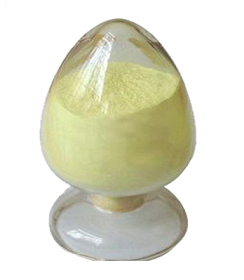|
| | 2,5-Dimethoxybenzaldehyde Basic information |
| Product Name: | 2,5-Dimethoxybenzaldehyde | | Synonyms: | 2,5-Dimethoxybenzaldehyde,97%;2,5-Dimethoxybenzald;5-DiMethoxy benzaldehyde;NSC 6315;2,5-Dimethoxybenzaldehyde Vetec(TM) reagent grade, 98%;2,5-DIMETHOXYBENZALDEHYDE;AKOS BBS-00003162;2,5-Dimethoxybenzaldehyde, 98+% | | CAS: | 93-02-7 | | MF: | C9H10O3 | | MW: | 166.17 | | EINECS: | 202-211-5 | | Product Categories: | C9;Carbonyl Compounds;Carbonyl Compounds;Chemical Synthesis;Organic Building Blocks;Aromatics;FINE Chemical & INTERMEDIATES;BUILDING BLOCKS;Benzaldehyde;Adehydes, Acetals & Ketones;Anisoles, Alkyloxy Compounds & Phenylacetates;Aldehydes;93-02-7 | | Mol File: | 93-02-7.mol |  |
| | 2,5-Dimethoxybenzaldehyde Chemical Properties |
| Melting point | 46-48 °C (lit.) | | Boiling point | 146 °C/10 mmHg (lit.) | | density | 1.1708 (rough estimate) | | refractive index | 1.5260 (estimate) | | Fp | >230 °F | | storage temp. | Keep in dark place,Sealed in dry,Room Temperature | | solubility | 795mg/l | | form | Crystalline Powder, Crystals and/or Chunks | | color | Yellow to beige | | Water Solubility | Soluble in chloroform and methanol. Slightly soluble in water. | | Sensitive | Air Sensitive | | BRN | 509301 | | InChIKey | AFUKNJHPZAVHGQ-UHFFFAOYSA-N | | LogP | 1.910 | | CAS DataBase Reference | 93-02-7(CAS DataBase Reference) | | NIST Chemistry Reference | Benzaldehyde, 2,5-dimethoxy-(93-02-7) | | EPA Substance Registry System | Benzaldehyde, 2,5-dimethoxy- (93-02-7) |
| | 2,5-Dimethoxybenzaldehyde Usage And Synthesis |
| Chemical Properties | yellow crystalline solid
 | | Uses | 2,5-Dimethoxybenzaldehyde is used in the preparation of 2,5-dimethoxyphenethylamine, which is utilized to prepare psychoactive drugs such as 2,5-dimethoxy-4-bromophenethylamine, 2,5-dimethoxy-4-iodophenethylamine and 4-Chloro-2,5-dimethoxy-phenethylamine. It acts as an intermediate in organic synthesis. | | Application | 2,5-Dimethoxybenzaldehyde, also known as 2C-H, is an organic compound and a benzaldehyde derivative. It can be used to produce 2,5-dimethoxyphenethylamine. 2C-H is also used to produce many other substituted phenethylamines such as 2C-B, 2C-I and 2C-C. | | Preparation | 2,5-Dimethoxybenzaldehyde synthesis: Anethole is oxidized to anisaldehyde , which after isolation is subjected to a BaeyerVilliger oxidation reaction with performic or peracetic acid. The O-formyl-4-methoxyphenol obtained this way is hydrolyzed . 4-Methoxyphenol is subsequently formylated using the Reimer-Tiemann method and the obtained 2-hydroxy-5-methoxybenzaldehyde is methylated with dimethylsulfate to 2,5-dimethoxybenzaldehyde.
Reaction
A : Anisaldehyde from anethole via oxidative cleavage: 20 g anise oil was suspended in a mixture of 150 mL water and 30 mL conc. sulfuric acid; addition of 55 g sodium bichromate at such a rate that the temperature did not exceed 40°C. The reaction mixture was extracted with 4 x 125 mL toluene and the solvent evaporated. The residual oil was vacuum distilled to yield 9.1 g anisaldehyde.
B : O-formyl-4-methoxyphenol: 6 mL anisaldehyde was dissolved in 75 mL dichloromethane (DCM). A mixture of 12 g hydrogen peroxide and 10 mL conc. formic acid was added over 30 min. The reaction mixture was gently refluxed for 21 h.
C: B 4-methoxyphenol: Evaporating the solvent from reaction mixture and taking up the residue in 100 mL aqueous NaOH (20%) (25 mL MeOH as co-solvent) yielded 4.1 g 4-methoxyphenol as a white crystalline product after the usual work-up and purification steps.
D : Reimer-Tiemann formylation of 4-methoxyphenol: 124.1 g 4-methoxyphenol was dissolved in NaOH solution (320 g NaOH in 400 mL water). In total, 161 mL chloroform was added. The usual work-up and steam distillation yielded 109.8 g of a clear yellow oil that did not solidify upon standing at room temperature (GC/MS: 94% 2-hydroxy-5-methoxybenzaldehyde).
E: D Methylation of 2-hydroxy-5-methoxybenzaldehyde: The yellow oil from was used without further purification. A 250 mL RB flask was charged with 100 mL acetone, 14 g anhydrous potassium carbonate and 10 g 2-hydroxy-5-methoxybenzaldehyde; the mixture was brought at reflux temperature and 11 g dimethyl sulfate was added. The reaction was continued for 4 hours. The solvent is evaporated and the crude end product crystallized in cold water. Recrystallization from EtOH/water yielded 8.3 g 2,5-dimethoxybenzaldehyde (GC/MS: 98%+ 2,5-dimethoxybenzaldehyde) | | Definition | ChEBI: 2,5-dimethoxy-Benzaldehyde is a dimethoxybenzene. |
| | 2,5-Dimethoxybenzaldehyde Preparation Products And Raw materials |
| Raw materials | trans-Anethole-->p-Anisaldehyde-->4-Methoxyphenol-->Dimethyl sulfate-->2-Hydroxy-5-methoxybenzaldehyde | | Preparation Products | 2,5-Dimethoxybenzylamine-->1-(2 5-DIMETHOXYPHENYL)-2-AMINOPROPANE&-->4-IODO-2,5-DIMETHOXYPHENETHYLAMINE-->2,5-DIMETHOXYBENZYL ALCOHOL-->2-Amino-1-(2,5-dimethoxyphenyl)ethanol-->4 7-DIMETHOXY-1-INDANONE 97-->4-Bromo-2,5-dimethoxybenzaldehyde-->2,5-Dimethoxycinnamic acid-->2-(2,5-Dimethoxy-phenyl)-benzothiazole-->3-[(5Z)-5-[(2,5-dimethoxyphenyl)methylidene]-4-oxo-2-sulfanylidene-1,3-thiazolidin-3-yl]propanoic acid-->2,5-DIMETHOXY-BETA-NITROSTYRENE |
|



